Featured image credit: Rocket Lab
Launch Time | December 15, 2023 – 04:05 UTC | 17:05 NZDT |
|---|---|
Mission Name | The Moon God Awakens |
Launch Provider | Rocket Lab |
Customer | Institute for Q-shu Pioneers of Space, Inc. (iQPS) |
Rocket | Electron |
Launch Location | Launch Complex-1B, Māhia Peninsula, New Zealand |
Payload mass | ~100 kg (~220 Ib) |
Where did the satellite go? | 575 km low-Earth orbit (LEO) at 42° inclination |
Did they attempt to recover the first stage? | No |
Where did the first stage land? | It crashed into the Pacific Ocean |
Did they be attempt to recover the fairings? | No |
Were these fairings new? | Yes |
This was the: | – 10th Rocket Lab launch of 2023 – 9th Electron launch of 2023 – 9th launch from Launch Complex-1B, Māhia Peninsula, New Zealand – 42nd Electron launch – 207th orbital launch attempt of 2023 |
Where to re-watch | Official replay Tim Dodd, the Everyday Astronaut streamed the launch |
What Does All This Mean?
The Moon God Awakens is Rocket Lab’s 42nd launch overall and its ninth launch this year, as well as its seventh launch from Launch Complex 1B. Their Electron rocket is launching a synthetic aperture radar (SAR) satellite for the Institute for Q-shu Pioneers of Space, Inc. (iQPS) into a circular 575 km low-Earth orbit. QPS-SAR-5, also named “Tsukuyomi 1” is iQPS’ sixth SAR Earth observation satellite.
The Moon God Awakens is Rocket Lab’s return to flight mission with their Electron rocket, after We Will Never Desert You failed to reach orbit on September 19, 2023. Shortly after stage separation, Electron’s second stage experienced an anomaly and the mission failed at T+02:31. More information in We Will Never Desert You‘s article or in Rocket Lab’s press release on the conclusion of their investigation.

How Did It Go?
Rocket Lab successfully launched The Moon God Awakens on December 15, 2023 – 04:05 UTC. Electron lifted off under the power of its nine Rutherford engines, passed MaxQ and shut all nine engines down at about T+2:40 propelling Electron’s second stage to an altitude of about 77 km. The two stages separated, the second stage Rutherford engine ignited, and Electron reached its initial orbit at T+9:28, where the third and final stage separated from stage two. Electron’s Kickstage then successfully performed its circularization burn at about T+54 min and iQPS’ satellite Tsukuyomi 1 was deployed into its target orbit shortly after, concluding the The Moon God Awakens mission.
The Moon God Awakens
The Moon God Awakens is a dedicated launch for iQPS to carry one satellite into a circular 575 km low-Earth orbit (LEO) at 42° inclination. The mission will deploy one ~100 kg synthetic aperture radar (SAR) satellite to join the existing fleet of three QPS-SAR satellites. This launch will mark the first launch of iQPS’ SAR satellite with Rocket Lab.
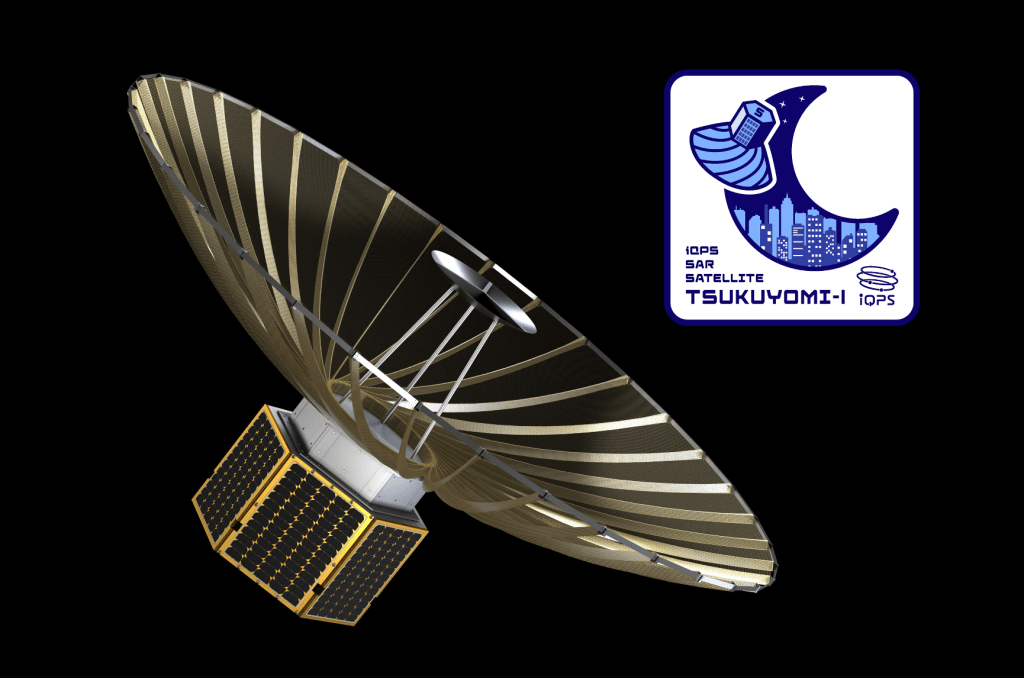
iQPS’ satellites are synthetic radar aperture Earth observation satellites utilizing radar and its reflection from the ground to map the Earth’s surface. Using radar has certain advantages over using optical-based methods. Radar, depending on the frequency used, can observe the surface through clouds, haze, and other obstructions that optical based systems struggle with. Synthetic aperture radar can also achieve better spatial resolution compared to similar sized optical ones with a maximum resolution of 0.7m per pixel for iQPS’ satellites.
Tech Demonstration Satellites QPS-SAR 1 & 2
Both QPS-SAR 1 and QPS-SAR 2, Izanagi and Izanami respectively, were technology demonstrators and were launched in December 2019 and in January 2021. While Izanagi was launched on the Indian PSLV, Izanami was launched about a year later on Transporter-1 on a Falcon 9.
The technology demonstrators proved to be successful demonstrators and iQPS moved forward with their production units QPS-SAR 3 & 4 that would launch on an Epsilon rocket.
Operational Constellation Satellites
QPS-SAR 3 and QPS-SAR 4, also named Amateru 1 & 2, were supposed to be the first production units to be sent to their operational orbits in October 2022. Unfortunately, the Epsilon rocket that Amateru 1 & 2 were supposed to launch on, experienced an anomaly and the flight terminated shortly after launch during stage 2 and stage 3 separation.
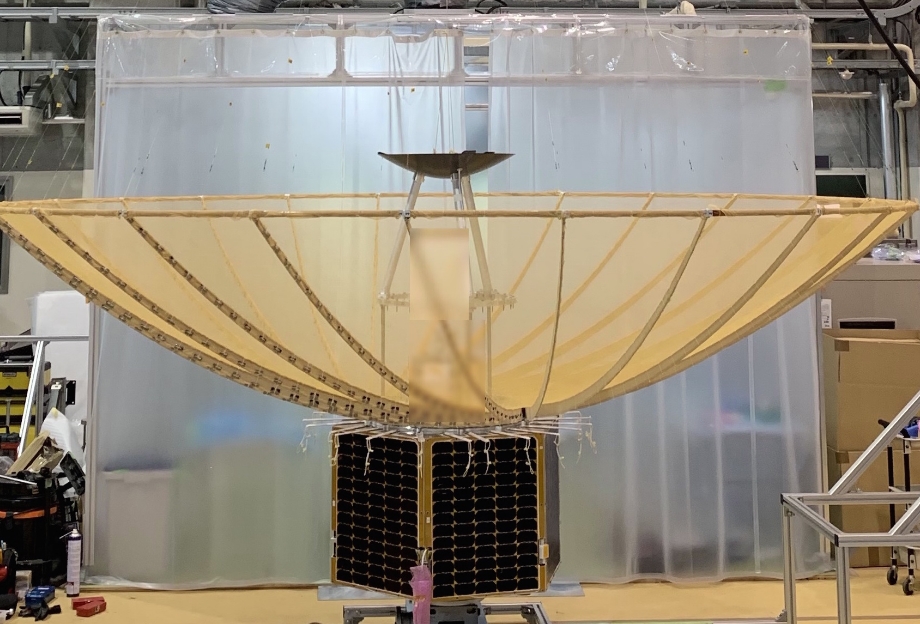
QPS-SAR 6, also known as Amateru 3, was the first operational iQPS SAR satellite launched in June of 2023 on Transporter-8 on a Falcon 9, with QPS-SAR 5, or Tsukuyomi 1, being the second operational satellite as it joins Amateru 3 in orbit.
QPS-SAR Satellite Overview
| QPS-SAR 1 | QPS-SAR 2 | QPS-SAR 3 & 4 | QPS-SAR 6 | QPS-SAR 5 | |
|---|---|---|---|---|---|
| Name | Izanagi | Izanami | Amateru 1 & 2 | Amateru 3 | Tsukuyomi 1 |
| Generation | Technology Demonstrator | Technology Demonstrator | Operational | Operational | Operational |
| Inclination | 37° | 97.5° | 97.6° | 97.5° | 42° |
| Launch Date | Dec 15, 2019 | Jan 24, 2021 | Oct 12, 2022 | June 12, 2023 | NET Dec 15, 2023 |
| Launch Vehicle | PSLV | Falcon 9 Block 5 | Epsilon | Falcon 9 Block 5 | Electron |
| Status | Operational | Operational | Destroyed during launch | Operational | Operational |
Timeline
Pre-Launch
| Hrs:Min:Sec From Lift-Off | Events |
| – 06:00:00 | Road to the launch site is closed |
| – 04:00:00 | Electron is raised vertical, fueling begins |
| – 02:30:00 | Launch pad is cleared |
| – 02:00:00 | LOx load begins |
| – 02:00:00 | Safety zones are activated for designated marine space |
| – 00:30:00 | Safety zones are activated for designated airspace |
| – 00:18:00 | GO/NO GO poll |
| – 00:02:00 | Launch auto sequence begins |
| – 00:00:02 | Rutherford engines ignite |
Launch
| Hrs:Min:Sec From Lift-Off | Events |
| 00:00:00 | Liftoff |
| +00:00:55 | Vehicle supersonic |
| +00:01:04 | Max Q |
| +00:02:40 | Main Engine Cut Off (MECO) on Electron’s first stage |
| +00:02:43 | Stage 1 separates from Stage 2 |
| +00:02:46 | Electron’s Stage 2 Rutherford engine ignites |
| +00:03:27 | Fairing separation |
| +00:06:43 | Battery hot-swap |
| +00:09:28 | Second Engine Cut Off (SECO) on Stage 2 |
| +00:09:32 | Stage 2 separation from Kick Stage |
| +00:54:13 | Kick Stage Curie engine ignition |
| +00:56:40 | Curie engine Cut Off |
| ~+00:57:30 | Payload Deployed |
What Is Electron?
Rocket Lab’s Electron is a small-lift launch vehicle designed and developed specifically to place small satellites (CubeSats, nano-, micro-, and mini-satellites) into LEO and Sun-synchronous orbits (SSO). Electron consists of two stages with optional third stages.
Electron is about 18.5 meters (60.7 feet) in height and only 1.2 meters (3.9 feet) in diameter. It is not only small in size, but also light-weight. The vehicle structures are made of advanced carbon fiber composites, which yields an enhanced performance of the rocket. Electron’s payload lift capacity to LEO is 300 kg (~660 lbs).
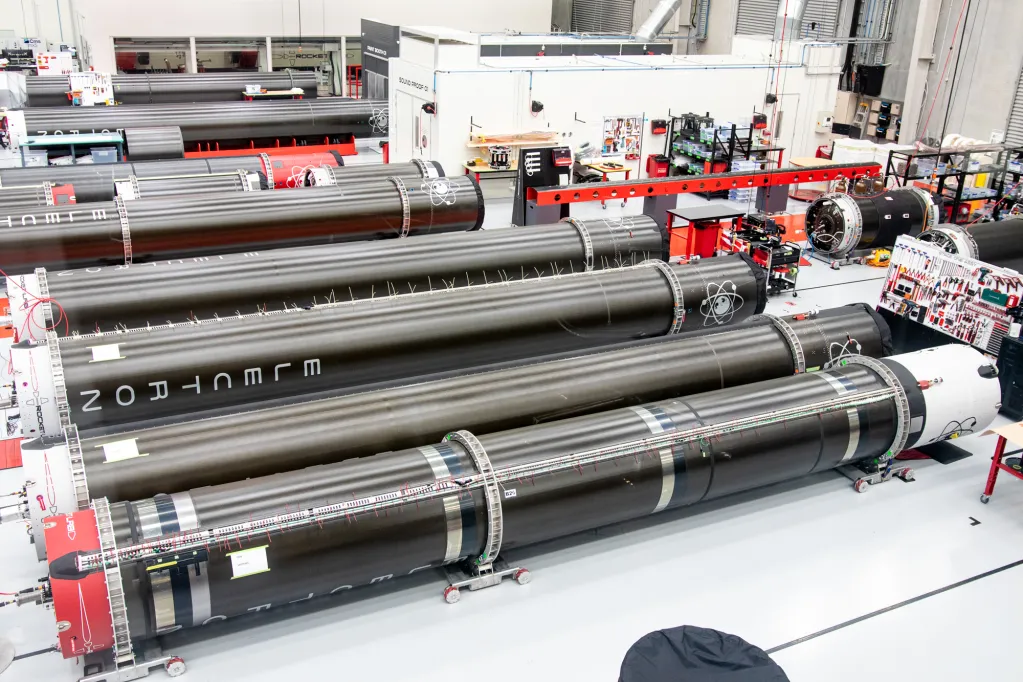
The maiden flight It’s A Test was launched on May 25, 2017, from Rocket Lab’s Launch Complex-1 (LC-1) in New Zealand. On this mission, a failure in the ground communication system occurred, which resulted in the loss of telemetry. Even though the company had to manually terminate the flight, there was no larger issue with the vehicle itself. Since then, Electron has flown a total of 41 times (37 of them were fully successful) and delivered 171 satellites into orbit.
First And Second Stage
| First Stage | Second Stage | |
|---|---|---|
| Engine | Nine (9) Rutherford engines | One (1) vacuum optimized Rutherford engine |
| Thrust Per Engine | 24 kN (5,600 lbf) | 25.8 kN (5,800 lbf) |
| Specific Impulse (ISP) | 311 s | 343 s |
Electron’s first stage is composed of linerless common bulkhead tanks for propellant, and an interstage, and powered by nine sea-level Rutherford engines. The second stage also consists of tanks for propellant (~2,000 kg of propellant) and is powered by a single vacuum optimized Rutherford engine. The main difference between these two variations of the Rutherford engine is that the latter has an expanded nozzle that results in improved performance in near-vacuum conditions.
For the Love At First Insight mission, the company introduced an update to the second stage by stretching it by 0.5 m. Moreover, they flew an Autonomous Flight Termination System (AFTS) for the first time.
Rutherford Engine
Rutherford engines are the main propulsion source for Electron and were designed in-house, specifically for this vehicle. They are running on rocket-grade kerosene (RP-1) and liquid oxygen (LOx). There are at least two things about the Rutherford engine that make it stand out.

Firstly, all primary components of Rutherford engines are 3D printed. Main propellant valves, injector pumps, and engine chamber are all produced by electron beam melting (EBM), which is one of the variations of 3D printing. This manufacturing method is cost-effective and time-efficient, as it allows to fabricate a full engine in only 24 hours.
Rutherford is the first RP-1/LOx engine that uses electric motors and high-performance lithium polymer batteries to power its propellant pumps. These pumps are crucial components of the engine as they feed the propellants into the combustion chamber, where they ignite and produce thrust. However, the process of transporting liquid fuel and oxidizer into the chamber is not trivial. In a typical gas generator cycle engine, it requires additional fuel and complex turbo-machinery just to drive those pumps. Rocket Lab decided to use battery technology instead, which allowed eliminating a lot of extra hardware without compromising the performance.
Different Third Stages
Kick Stage
Electron has optional third stages, also known as the Kick Stage, Photon, and deep-space version of Photon. The Kick Stage is powered by a single Curie engine that can produce 120 N of thrust. Like Rutherford, it was designed in-house and is fabricated by 3D printing. Apart from the engine, the Kick Stage consists of carbon composite tanks for propellant storage and 6 reaction control thrusters.
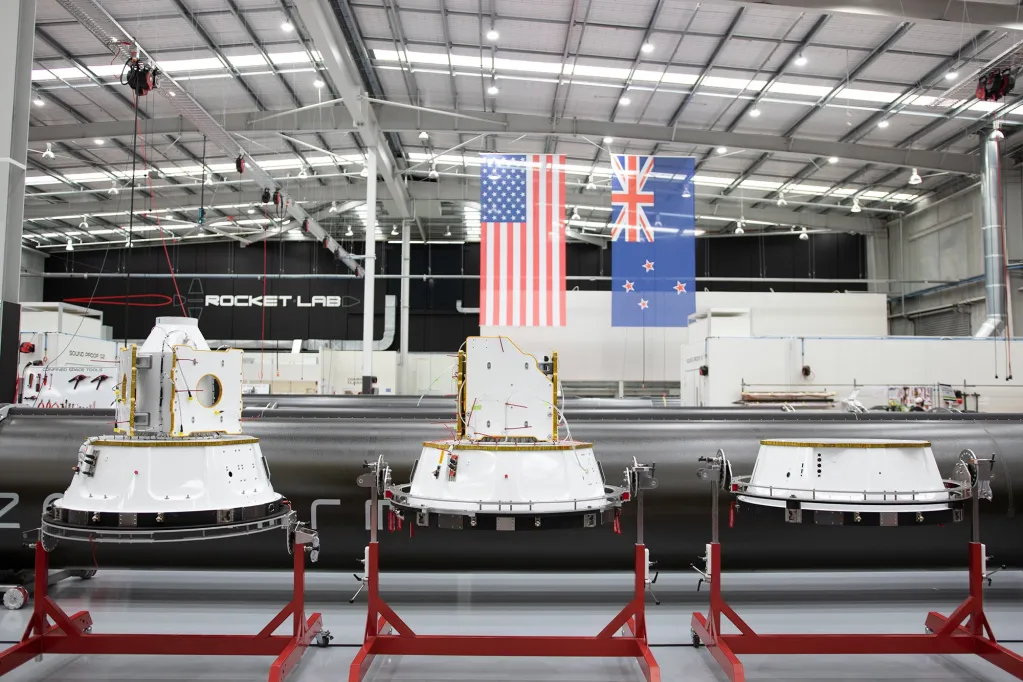
The Kick Stage in its standard configuration serves as in-space propulsion to deploy Rocket Lab’s customers’ payloads to their designated orbits. It has re-light capability, which means that the engine can re-ignite several times to send multiple payloads into different individual orbits. A recent example includes Electron 19th mission, They Go Up So Fast, launched in in 2021. The Curie engine was ignited to circularize the orbit, before deploying a payload to 550 km. Curie then re-lighted to lower the altitude to 450 km, and the remaining payloads were successfully deployed.
Photon And Deep-space Photon
Rocket Lab offers an advanced configuration of the Kick Stage, its Photon satellite bus. Photon can accommodate various payloads and function as a separate operational spacecraft supporting long-term missions. Among the features that it can provide to satellites are power, avionics, propulsion, and communications.

But there is more to it. Photon also comes as a deep-space version that will carry interplanetary missions. It is powered by a HyperCurie engine, an evolution of the Curie engine. The HyperCurie engine is electric pump-fed, so it can use solar cells to charge up the batteries in between burns. It has an extended nozzle to be more efficient than the standard Curie, and runs on some “green hypergolic fuel” that Rocket Lab has not yet disclosed.

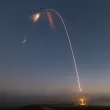


You guys are the best at these, such important up-to-date information and wonderfully presented. Keep it up!